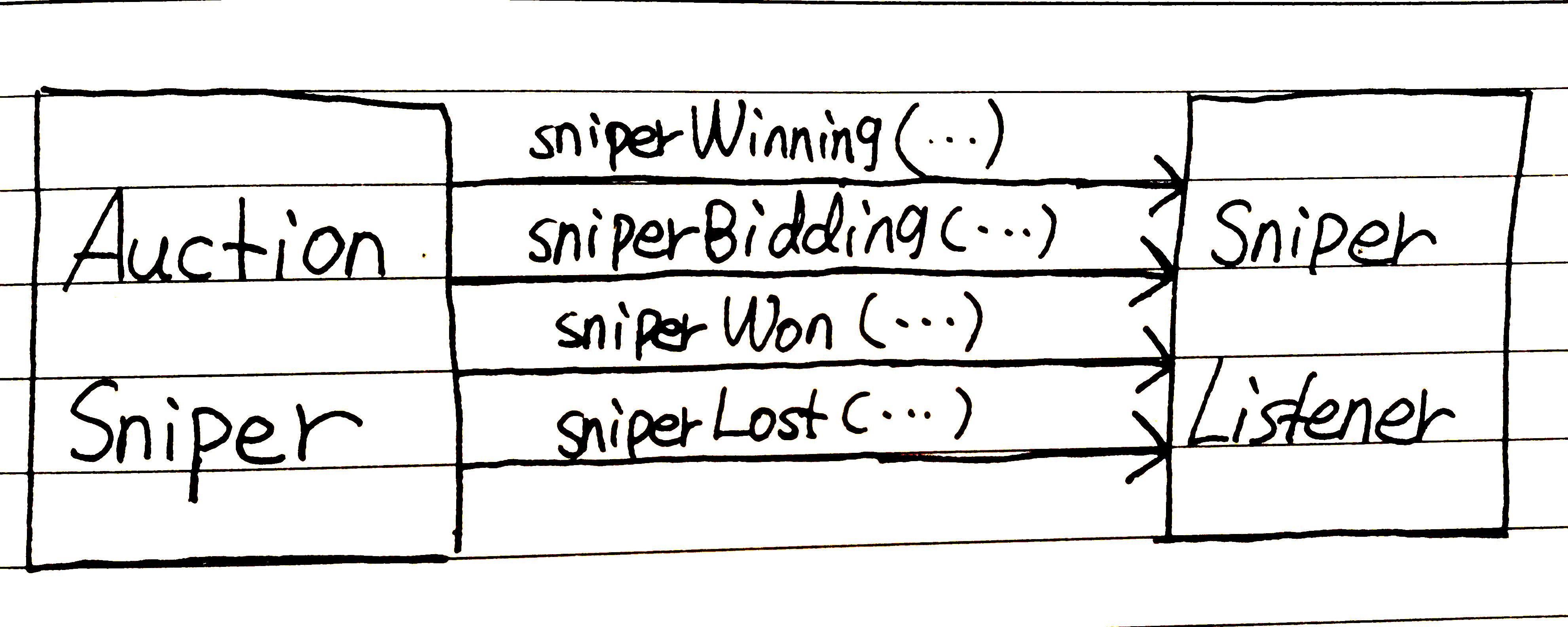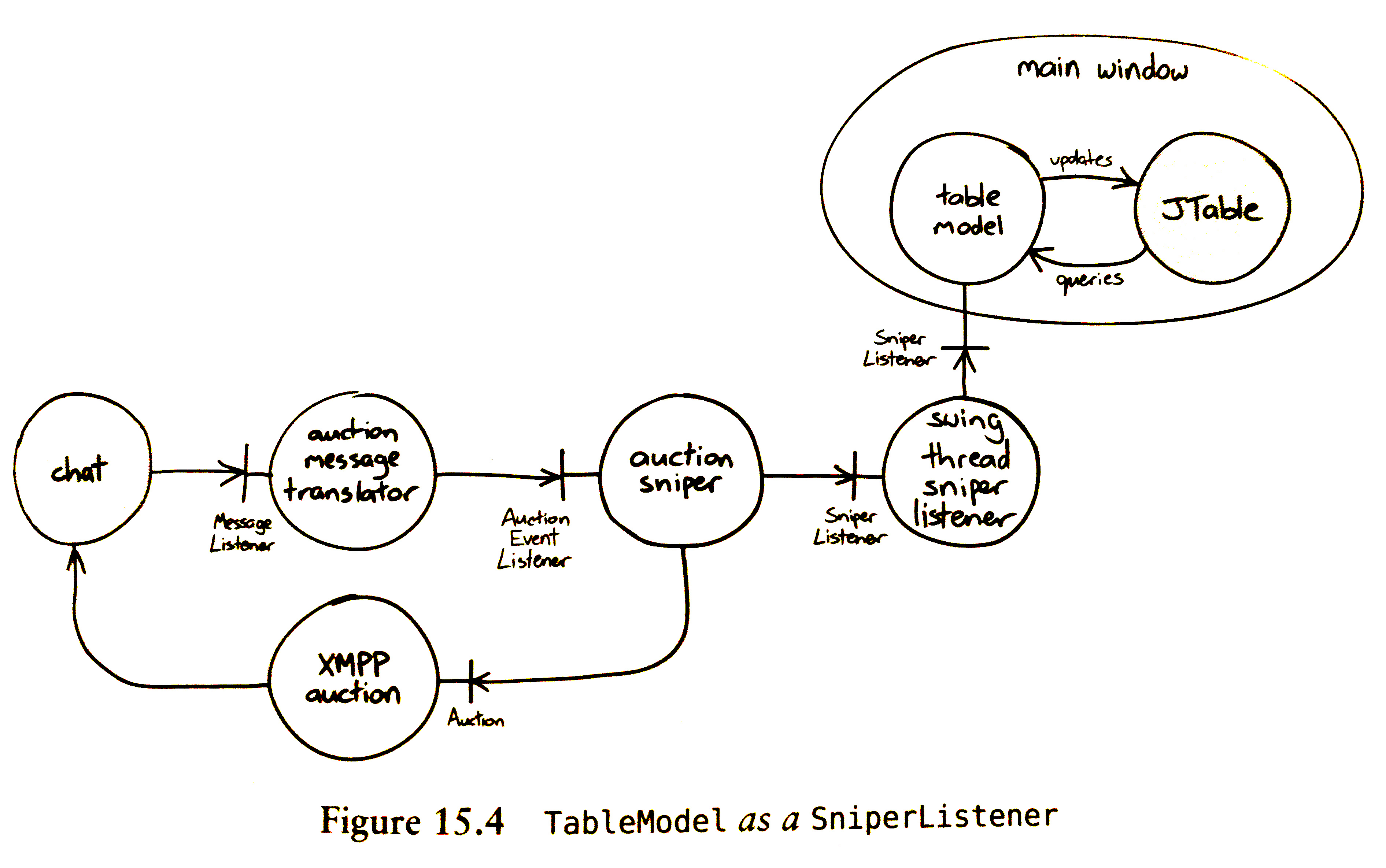GOOS Book Distilled Part 11
A follow through of the great book Growing Object-Oriented Software, Guided by Tests with code

This is a series of blog posts going through the great book Growing Object Oriented Software Guided By Tests, typing in code chapter by chapter, trying to add some of my own understanding where things may not be easy to grasp in the book. I highly recommand you get a copy of the book and follow along with me. Happy coding.
Simplifying Sniper Events
Listening to the Mood Music
Let’s take a closer look at how AuctionSniper notifies its SniperListener.

In previous post, we modified sniperBidding(), so now it takes a SniperState as parameter. The original plan is to change all the methods to use the SniperState, but that feels like a lot of repeating work. What is wrong?
The problem is caused by a subtle duplication. What is duplicated you may ask. The ways we send message to the listener got duplicated. The information is sent through two means to the listener. One is through the SniperState, one is through the methods themselves. So in other words, the data that got sent to the listener is living in two different places.
Turns out this is a very common problem. One object is calling many methods on another object, and they are all on the same conceptual level. In this case, we can simplify things by collapsing all those methods into one, which takes one kind of a Command argument, the Command encapsulate the data and action type.
For example:
Imaging in an music player app, the controller can do the following:
controller.playMusic("xxx");
controller.next();
controller.removeSong(3);
controller.previous();
controller.addToNext("xxx");
controller.stop();This can be simplified to:
class abstract PlayerCommand { ... }
class PlayMusicCommand extends PlayerCommand { ... }
class NextCommand extends PlayerCommand { ... }
...
interface Controller {
void execute(PlayerCommand command);
}
...
controller.execute(new NextCommand());One big benefit of doing this, is that now the Controller interface is decoupled from the concrete command, and becomes easier to maintain and extend.
Having this general goal in mind, the next three parts are just steps to fulfill this goal.
Trimming the Table Model
The strings for sniper states, Joining, Bidding, Winning, Lost, Won, are in the MainWindow class. They fit better in the SnipersTableModel, so we moved them there.
Object-Oriented Column
This is a very classic refactoring of OO design. Replace switch by polymorphism. We apply this to the Column, study the code if you are unfamiliar with this trick.
Shortening the Event Path
Since the SnipersTableModel is inside the MainWindow class, MainWindow has to foreward the calls to update SnipersTableModel. We can acually simplify this by just let the SnipersTableModel implement SniperListener directly and pull it out into the Main class. And when the MainWindow is created, we pass it in.
This is what the system looks like now:

Final Polish - Add the Column Titles
Now we add titles for columns, which is pretty straight foreward, so no more explanation here.
This finishes Chapter 15.

Twitter
Google+
Facebook
Reddit
LinkedIn
StumbleUpon
Email